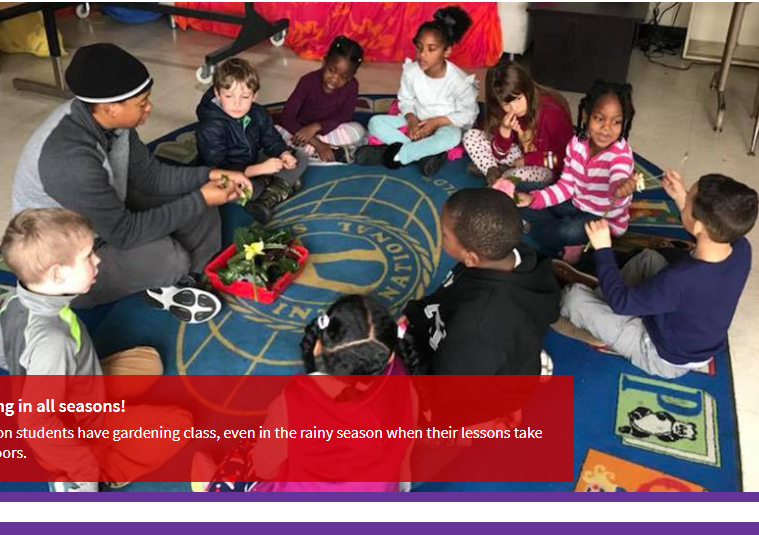A guest post from Molly Brostrom, the proud parent of an Emerson graduate
Recently I’ve been worrying about when I will have the chance to be part of a diverse community again. You see, my son graduated this month from Emerson Elementary, a public elementary school in the Temescal neighborhood. While he will continue in Oakland public schools (Claremont and Oakland Tech), I know that it is in elementary where school families are most bonded in the shared hope of getting our kids a good start in school and life.
At school drop off each morning, we mingled with children and parents of all colors, ethnicities, and economic status – most of the families at our school were eligible for free or reduced lunch; a majority are African-American, but many are Hispanic, Asian, mixed race; recent immigrants; and a few of us are white. My son has classmates who live in public housing, whose parents work the night shift, and pick up shifts at the Gap to make ends meet. His school offers a glimpse into lives that we don’t often come into contact with in our otherwise Rockridge lives.
We chose Emerson for this diversity but struggled with the decision. The school has the low test scores that are too often associated with schools comprised of mostly low-income students. I worried for my son, but I knew that he had access to books at home, piano lessons and summer camps, and lives in a safe neighborhood. And I worried for the kids we’d leave behind by opting out of the lower-performing school. At that time, I wrote in the Rockridge News:
What will he miss out on by not being at a school with more resources? Will he lack challenges by not being in a cohort of similarly privileged classmates? Will the family challenges of some of the students [at Emerson] overwhelm his teacher? The tears of concern brought on tears of frustration: Why does giving your child a good, public education have to be such hard work? Why do decisions to benefit our own kids have to be at the expense of other kids in our city? Why aren’t the masses of children attending chaotic and underperforming schools more of a concern to our country?
Six years later, I can say unequivocally that it was a good decision. Our son loved Emerson – his friends, the teachers and staff. He was always excited to go to school and wanted to stay until the final minutes of the afterschool program. His sweaty pink face and blond hair were a fixture on the basketball court late into the afternoon. During the school day, he eagerly learned what was offered, and buried his head in books when he needed to, developing an uncanny ability to focus in chaos.
I know he wasn’t always challenged by the academics. Behavioral issues and the needs of lower performing students often overwhelmed his teachers and they admitted to not having the bandwidth to sufficiently address the needs of higher performing kids. Yet he flourished, growing into a smart, funny, kind kid. Research shows that diversity makes us brighter; my son’s experience attending a diverse school supports this finding.
And more importantly in my mind, he gained characteristics that are critical to his life and future as part of a diverse society. He is flexible; he talks about race with ease and describes the complex family and personal problems that classmates experienced with empathy and without judgment. He’s learned that his needs are not more important than anyone else’s, and maybe less so, given his relative privilege.
One regret I have is that achievement at the school, at least as shown on test scores, did not noticeably improve while we were there. While Emerson has made some progress, there are still too many kids years behind in learning. Leadership and teacher transitions at the school and too many OUSD “death by post-it note” strategy sessions contributed to this stalling; but the primary cause is the fact that kids reeling from the trauma of poverty need intensive and sustained support – and our schools and social support systems are not providing this.
I don’t know how the kids who are grade levels behind will catch up and I worry for them and for our country that is so blithely ignoring them. And I should worry, and we all should – but it’s harder to feel and maintain the urgency of these concerns when our lives aren’t intertwined. It’s too easy to live in our separate worlds and only know others through news or statistics. And while easy, it can’t be good for our psyches and souls.
Knowing each other as members of a shared community builds our understanding and support for each other. Being a part of a diverse community at Emerson was not always easy – learning of the struggles and divides could be depressing and frustrating. But the kids showed us that despite demographic differences, they were classmates first. And other parents loved my baby as I loved theirs. We lived community across the divides and that was uplifting, and an experience that is hard to replicate in our society. And I will miss it.
Thriving in diverse community is key to our country’s future. What better time to learn to do so than in elementary school?
Molly Brostrom
June 29, 2018


One thought on “Finding Diverse Community in Public School, A Parent’s Reflection”